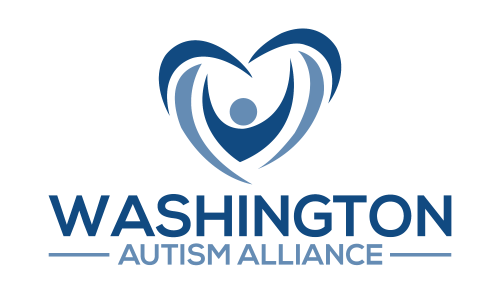13 years ago, I came back home from almost a year spent at a residential treatment center for autistic teens several thousand miles away from my home, and I’m still not sure if the experience has been more helpful than harmful to me. I was sent there after a year of complete mental breakdown, which resulted in suicide attempts, school refusal, and a breakdown of almost all interpersonal relationships. That breakdown led to a psychiatric hospitalization and my autism diagnosis at the age of 14. A year later, with my mental state remaining in the same condition, in desperation my parents and doctors agreed to send me to a residential treatment center in a Salt Lake City suburb, about 3,000 miles away from my home in Anchorage, Alaska.
I entered a unit in a locked-down treatment center where we were always observed by staff. The autism unit was only one unit in the treatment center: other units included generic units divided by gender and age. The autism unit was all genders ages 12-17, and from the beginning this was a breeding ground for sexual harassment. My unit included both sex offenders and victims of sexual assault, both people with incredibly high IQs and those who were on the border of being intellectually disabled, people that had been court-ordered there by the justice system and people who had never committed a crime and were there at the advice of their doctor.
People in that unit had a wide range of comorbidities, ranging from Major Depressive Disorder and Generalized Anxiety Disorder to more complex conditions like Schizoaffective Disorder. We spent all day either in classes where we hardly learned anything, both because the material was less challenging than in a normal school and because at least one person in every class was disruptive enough to make learning anything a challenge, or in therapy sessions, both group and individual. To this day I question how useful much of that therapy was.
The stated reason for putting all autistic individuals in the same unit, regardless of gender or age, was for us to learn how to relate to a wide variety of people. Well, I learned how to relate to a 12 year old boy who kept impulsively screaming obscenities, a 17 year old whose schizoaffective disorder convinced her that I had stolen her magical mind powers and wanted to kill me as a result, a 14 year old sex offender who had molested his little sister, and a 13 year old who had so much rage from being raped by her stepfather that she was arrested multiple times for physically assaulting other people.
While these experiences did teach me to have compassion for a wide variety of people, they were also traumatizing. Staff had to literally watch the girl with schizoaffective disorder like a hawk to prevent her from assaulting me, I was sexually harassed multiple times by the boys on the unit, and hearing about what some of the other kids had gone through was pretty shocking to a 15 year old girl from a sheltered background like myself. Furthermore, those experiences hardly prepared me to relate to the average person at school or in the workplace, which tends to be the goal for most social skills training for autistic kids.
When my parents heard about the average patient on my unit, they became convinced that this was not the place for me. But at that point they didn’t really have a choice. If they decided to withdraw me against medical advice, our insurance would refuse to pay for the days that I had already spent at the treatment center, and my parents couldn’t afford that. The treatment center just happened to be building a new autism unit, with a hyperbaric oxygen chamber, something that I have since learned is not an evidence-based treatment for autism. The costs of building that new unit were considerable, and both my parents and I wonder if the psychiatrist’s decision not to grant me a medical release to go home until after about 9 months was influenced by the money my insurance and Medicaid were paying for my treatment.
That is not to say that my stay there didn’t have any upsides. My psychiatrist was finally able to convince my parents to let me go on antidepressants, which effectively treated my Major Depressive Disorder and Generalized Anxiety Disorder. I was finally able to start repairing the damaged relationship with my parents during individual therapy, and my personal therapist told me about her mother, who was on the autism spectrum, which, for the first time, gave me hope that I could have some sort of future. Of course, I was kept there about 5 months after being stabilized on medication, but the money to build a new autism unit doesn’t grow on trees, after all, and my psychiatrist and therapist were both convinced of the therapeutic benefits of endless social skills groups filled with the kinds of people who would not be interacting with society in general, lectures on coping skills that I had heard dozens of times before, and art therapy that largely consisted of coloring books and Enya music.
My doctor agreed to let me have a visit home for my 16th birthday, and my father came down the Alcan highway and drove me back up through Canada to Anchorage, Alaska. I flew back a few days later, but in 2 months I was home for good. I’m not going to pretend that everything was smooth sailing from there on out. I remained isolated and somewhat depressed for the rest of high school. It wasn’t until college that I made friends and discovered a sense of purpose for my life.
I’ve spent years trying to figure out if residential treatment was truly necessary and dealing with the trauma that experience caused. There have been times that I’ve credited that place with saving my life, and times when I’ve seen it as both entirely unnecessary and traumatic. I am convinced that I remained there far longer than was necessary, and that sending me so far away from home was a mistake, although I should note there was and is no specialized residential treatment center for autistic youth in Alaska. I’ve since learned that the residential treatment center that I stayed at has been sued for neglect of patients leading to sexual abuse, and that a patient riot took place there in 2015. The Salt Lake City Tribune specifically mentioned that center in their report on the troubled teen industry in Utah, and I am grateful that I wasn’t subjected to some of the horrors that other kids in those treatment centers underwent.
I do think that strict oversight of residential treatment centers is absolutely necessary, as well as better training of staff. States also need to prioritize in-home behavioral support instead of residential placements that are so often traumatizing, although I acknowledge that residential treatment may be the only safe option for youth that are dangerous to others. In cases where residential treatment is necessary, states should provide it in-state, instead of sending children and teens thousands of miles away from their homes.
Here in Washington State, hundreds of children are shipped to out of state residential treatment centers and therapeutic boarding schools each year, because Washington lacks the facilities to treat these children. Enhanced Behavioral Support Homes could meet the needs of many of these children and youth, right here in Washington State and in a non-institutional setting, but so far Washington has refused to provide funding for them.
For far too long states, including Washington, have been content to pawn troubled kids off to a state where residential treatment centers are a lucrative, poorly regulated industry. Children with behavioral issues, mental illness, and developmental disorders are not afterthoughts, and deserve access to evidence-based treatment that respects their dignity. Failure to provide this has led to me and thousands of others dealing with life-long trauma. We can and should do better.


